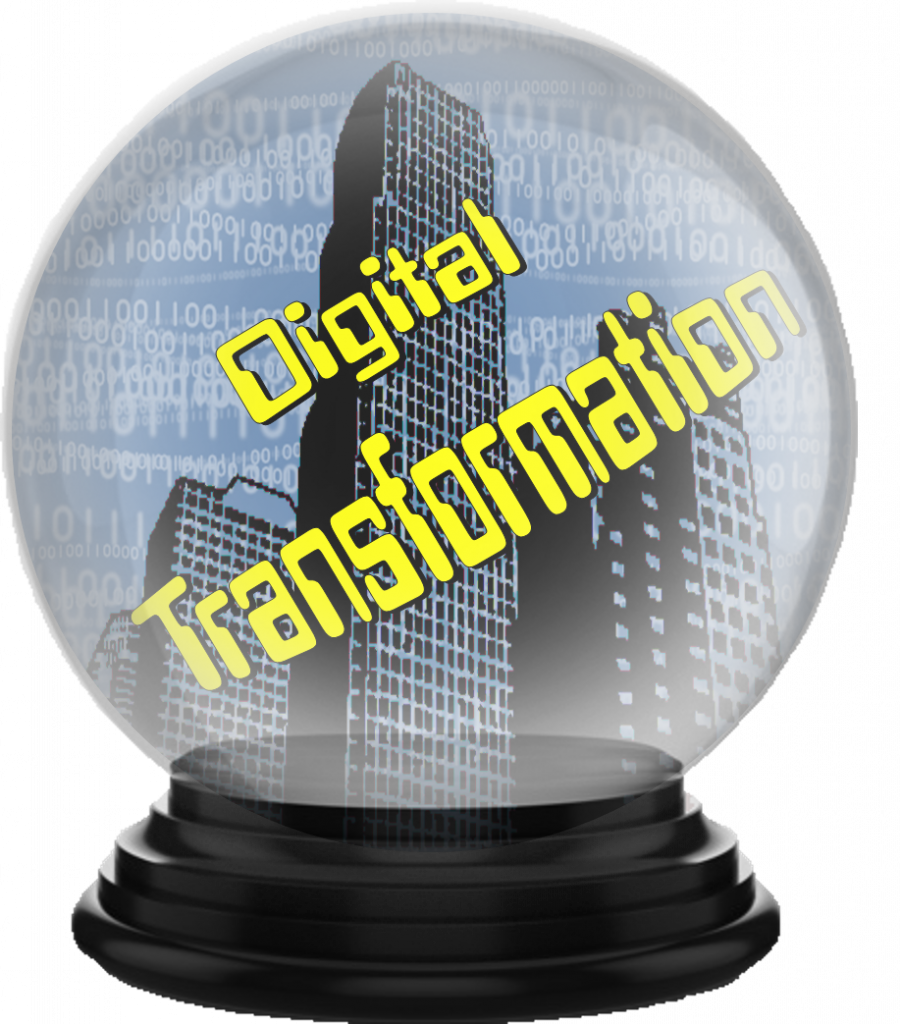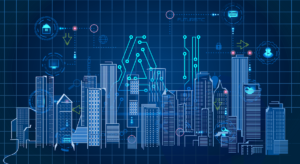We live and work in the Digital Age. Companies successfully adapting to this new age will find themselves at the top of the evolutionary food chain; while enterprises failing to adapt, will, as in ages past, simply fade away. Adaptability is the key to success. Paul Rogers notes, “The focus of many Digital Transformation efforts has been on the adoption of new technologies.”[1] This focus is understandable given all the new technologies now in play. Rogers believes, however, technology shouldn’t be the primary business focus. He believes the focus should be on the transformation itself rather than the technologies that help implement transformation. He asks, “What does a successful organization restructure look like?” There is no single answer to that question. Every organization will have to develop its own vision of what a successful organization looks like. Rogers notes, “Many companies aren’t set up correctly for Digital Transformation. Antiquated job functions and processes have resulted in a real lack of flexibility. Encouragingly, we’re now seeing more companies accepting that to transform successfully, they must first redesign their core processes around the customer experience and then reorganize the enterprise to align with these digital processes.”
Digital transformation trends
The Digital Age draws its life’s breath from data. Choke off the data and digital transformation dies. Fear not; there’s little chance of that happening. Data is being generated by all sorts of devices and the number of devices generating data is predicted to grow dramatically thanks to the Internet of Things (IoT).
IoT and 5G. The IoT is not a single network (or even a network of networks). Rather, the IoT is a collection of ecosystems. Each IoT ecosystem includes sensors that generate data, networks through which the data is transmitted; and analytics platforms that make sense of the data. The amount of data predicted to be generated by IoT ecosystems is enormous. With the introduction of fifth generation (aka 5G) telecommunications, the IoT will be able to support everything from smart factories to smart cities. Alison DeNisco Rayome (@AlisonDeNisco) reports, “In 2019, savvy CIOs will focus on how to completely reinvent their operations to leverage the promise of disruptive technologies like 5G, artificial intelligence (AI) and machine learning, automation and robotics, augmented and virtual reality (AR and VR), and next-generation cloud services, including edge computing.”[2]
AI and cognitive computing. AI and cognitive computing transform a digital enterprise into an intelligent enterprise. Cognitive technologies are required because organizations continue to struggle with the amounts of data currently at their disposal. Joe McKendrick notes, “The mountains of data, mountains of gadgets, and mountains of hype have been engulfing us.”[3] He argues AI is the tool that will help organizations dig out from under those mountains. He concludes, “AI will increasingly serve as a way to filter through the growing data hairball that characterizes today’s enterprises.”
Blockchain. The lack of standards in the field of distributed ledgers means organizations are likely to be involved in multiple blockchain schemes. Reporters from the Arabian Marketer note, “Enterprises will participate in multiple blockchain networks, thus creating a network of networks, something that allows them to simultaneously interact with multiple blockchain ecosystems. Blockchain performance will become a more important requirement within the enterprise space, driven by the need to accommodate more than simple transaction data or as an element in applications where real-time performance and linkage with other data sources matter.”[4] Having to participate in multiple blockchain schemes complicates business transactions. Expect to see blockchain standards wars in the years ahead.
Cloud and edge computing. The enormous amounts of data being collected means organizations must decide where to store and where to analyze that data. The general movement has been toward the cloud; but, so much data is being generated organizations are starting to think some of the analysis should be done at the edge rather than centrally. As a result numerous hybrid cloud schemes have been developed. Reporters from the Arabian Marketer assert, “Hybrid multi-cloud environments will increase the relevance of interconnection. Enterprises are now accessing SaaS, IaaS and PaaS solutions from multiple providers. 2019 will see the next level of challenges associated with hybrid cloud and multi cloud approaches.” IDC analysts predict, “By 2022, over 40% of organizations’ cloud deployments will include edge computing and 25% of endpoint devices and systems will execute AI algorithms.”[5] Macy Bayern (@macybayern) adds, “With intelligence moving closer to the edge, a smart IT infrastructure forms, applications give power to more participants, and serverless architectures gain popularity. … This results in a lower reaction time and more localized analytics.”[6]
The real-time enterprise. Business is now moving at the speed of computers. As Bayern notes, reaction time is becoming a critical capability for many organizations. Thanks to technologies like 5G, IoT, and cognitive computing, companies will be better prepared than ever to function in this real-time world. Analysts from DXC Technology insist, “Leveraging information will become a core competency in 2019. Companies that experience Information Enlightenment will realize that artificial intelligence and machine learning can improve service offerings and generate new sources of revenue — but only with the right algorithms, model orchestration, data and infrastructure.”[7] The real-time enterprise can make better decisions, faster leveraging cognitive technologies. Studies have shown better decision-making always has a positive impact on the bottom line.
Concluding thoughts
Analysts aren’t suggesting companies need to transform into digital enterprises for the sake of change. They insist it’s for the sake of survival. Louis Columbus explains, “Calling the rapid digitization of competitors and industries a clock ticking loudly in the heads of every CEO, IDC advises enterprises that if they’re not digitally transforming their companies at an aggressive pace, that by 2022, just over two-thirds of their total addressable markets will be gone.”[8] Survival is enhanced by adaptability and digital transformation makes enterprises much more adaptable.
Footnotes
[1] Paul Rogers, “Dimension Data reveal digital business trends to look out for in 2019,” Intelligent CIO, 6 December 2018.
[2] Alison DeNisco Rayome, “7 enterprise technology trends that will drive digital transformation in 2019,” TechRepublic, 29 November 2018.
[3] Joe McKendrick, “My One Big Fat Digital Technology Prediction For 2019,”
[4] Staff, “5 Trends To Dominate Digital Future Of Enterprises In 2019,” The Arabian Marketer, 4 December 2018,
[5] Louis Columbus, “IDC Top 10 Predictions For Worldwide IT, 2019,” Forbes, 4 November 2018.
[6] Macy Bayern, “6 digital trends spearheading business transformation in 2019,” TechRepublic, 19 November 2018.
[7] DXC Technology, “Attention Business Leaders: These Six Trends Will Impact Your 2019 Digital Transformation Journey,” BusinessWire, 15 November 2018.
[8] Columbus, op. cit.





